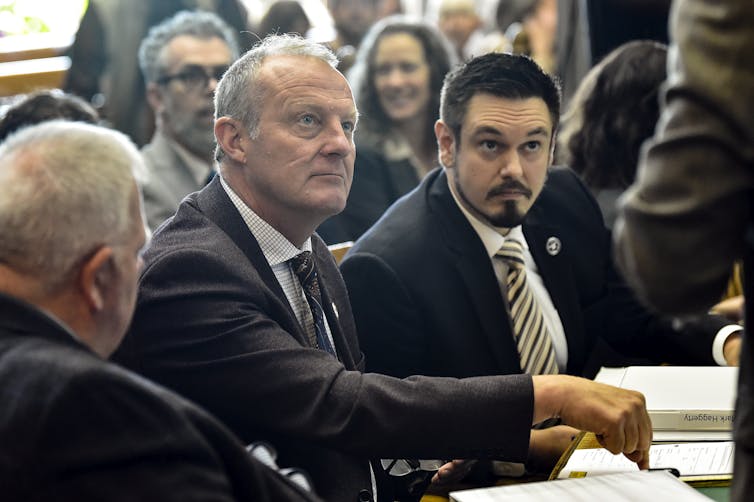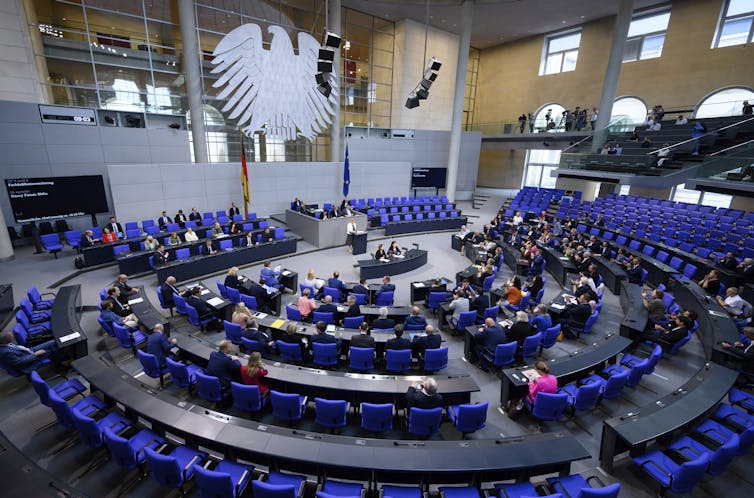
On Aug. 14, a Montana court delivered what is being hailed as a game-changing ruling in a much anticipated youth-led climate change case, Held v. State of Montana.
The Montana First Judicial District Court ruled that the state’s energy policy forbidding the government from considering the impacts of greenhouse gas (GHG) emissions and climate change in its environmental decision-making violates the state constitution’s fundamental “right to a clean and healthful environment.”
Read more: Montana kids win historic climate lawsuit – here's why it could set a powerful precedent
The court’s decision is a resounding victory for the 16 youth plaintiffs and their legal team. Michael Gerrard, founder of Columbia University’s Sabin Center for Climate Change (who was not involved in the case), said that “I think this is the strongest decision on climate change ever issued by any court.”
That said, the court stopped short of requiring the state to develop a supervised GHG emissions reductions plan.
The Montana state government issued a fiery response to the ruling and has signalled its intention to appeal, which will send the case to the state Supreme Court. However, regardless of how events play out in Montana, one question stands out: What are the implications of this ruling here in Canada and around the world?
Express and implied rights
The legal landscape here in Canada is, unsurprisingly, quite a bit different from the United States. Specifically, The Canadian Charter of Rights and Freedoms does not include a green amendment like Montana’s; indeed, the Charter has not been amended once since its enactment in 1982.
Consequently, rights-based climate litigation in Canada requires the judiciary to interpret other Charter rights — particularly Section 7’s right to life, liberty and security of the person, and Section 15’s right to equality — as naturally and necessarily encompassing a right to a clean and healthy environment.

A number of Canadian environmental law scholars argue forcefully that even though Canada’s Charter is silent on the need to protect the Earth’s critical life-support systems — clean air, water and a stable climate — the rights to life, equality and security of the person will be meaningless on a dying planet and therefore must be interpreted with reference to ecological sustainability.
Indeed, the core argument advanced in the ongoing youth climate case in Canada, La Rose v. His Majesty the King, is that the federal government has a constitutional duty to protect Canadian youth and future generations from climate change. A decision by the Federal Court of Appeal in the La Rose case is expected soon.
If the youth plaintiffs prevail, the case will proceed to a trial. If the court rules in favour of the federal government, the youth plaintiffs will almost certainly appeal to the Supreme Court of Canada.
The Montana decision, however, as strong an endorsement as it is of climate science and renewable energy alternatives to fossil fuels, will not likely assist the youth plaintiffs in the La Rose case. The Montana decision is legally distinguishable because its constitution includes an express — as opposed to an implied — right to a clean and healthful environment.
Read more: Why the youth climate court case failed, and what's next for Canadian climate policy
The same goes for Canadian arguments advancing the common law public trust doctrine, which is already expressly codified in the Montana Constitution.
A constitutional challenge
The other key climate law case in Canada is the Supreme Court of Canada’s pending decision in Alberta’s constitutional challenge to the federal Impact Assessment Act. Here, too, the Montana decision is a sobering reminder of the limitations of constitutional litigation when it comes to advancing climate policy.
If the Montana decision stands, state agencies will have the discretion to consider GHG emissions and climate change when reviewing energy projects. But as the Supreme Court of Canada case illustrates, the key question is not whether climate change is considered, but how.
After all, Canada approved the Bay du Nord offshore oil project under the Impact Assessment Act, contrary to Alberta’s claims that the “no more pipelines law” will block future fossil fuel development.
Beyond symbolism
But that does not mean that the Montana decision is merely a symbolic victory. It’s a strong vindication of independent scientific expertise and its relevance to climate and energy policymaking.
The Montana decision also reaffirms the potential of collective action and collaboration among youth, environmental lawyers, and climate change scholars.
The Montana court joins other courts around the world in highlighting the problem of delaying climate action, which requires youth and future generations to make even faster, more radical and more expensive emissions reductions down the road.

Germany’s highest constitutional court, for example, held that it was unconstitutional for the government to make decisions today that lock-in future harms and place a disproportionate burden on future generations. Yet Germany is still struggling to implement the court’s ruling by enacting a sufficiently ambitious emissions reduction plan. Judicial rulings must be founded on and sustained by sufficient political support to make a real difference on the ground.
Thus, the key now is to build on the court’s strong decision and take the fight to the democratic political arena where more than one Canadian provincial premier continues to deny their government’s responsibility to urgently act on climate change.
Verdicts send strong messages, but democratic politics is required to turn messages into policy.
Jason MacLean is a member of the board of directors of the Pacific Centre for Environmental Law and Litigation (CELL), and East Coast Environmental Law (ECELAW).
This article was originally published on The Conversation. Read the original article.







